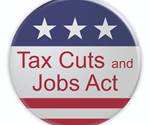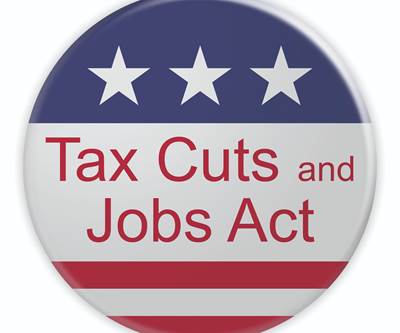The Impact of Tax Reform on Capital Expenditures
The Tax Cuts and Jobs Act includes a provision for how mold builders should account for capital expenditures.
The Tax Cuts and Jobs Act (the Act) impacts how mold builders account for income and compute tax liabilities in 2018 and beyond. The Act introduces dozens of new provisions and significantly modifies or eliminates others.
Many of the provisions are taxpayer-friendly, including how mold builders account for capital expenditures. Capital expenditures include the purchase of equipment, machinery, tooling, plants and buildings and even a parking lot. The following explains how the new law impacts the purchase of capital assets.
Bonus Depreciation
Mold builders are allowed an additional bonus-depreciation deduction related to qualified property in the year that they place the qualified property into service. Bonus depreciation has always been temporary in nature but has been part of the tax code since 2001. Since then, mold shops have been entitled to a bonus, accelerated depreciation for qualified property, ranging anywhere from 30 to 100 percent of the asset’s cost basis. Before the Act, the bonus depreciation amount was 50 percent of the adjusted basis for assets that were placed in service before 2018, and it would phase out as it decreases to 40 percent in 2018 and 30 percent in 2019.
The bonus depreciation is an acceleration of depreciation. For example, if a mold shop buys a new lathe, then the lathe qualifies as a seven-year Modified Accelerated Cost Recovery System (MACRS) property for $250,000 on September 1, 2017. The shop will claim a bonus depreciation deduction of $125,000, with the remaining $125,000 of the tax basis recovered over the life of the asset.
MACRS is the current tax-depreciation system in the United States, under which the capitalized cost (or basis) of tangible property is recovered over a specified life by annual deductions for depreciation.
Bonus depreciation for the eligible property is automatic. Mold builders can elect-out of the bonus depreciation for any class-life of property. The mold builder makes the election concerning a class-life of property and not for a particular asset. For example, a mold builder that purchased both a five-year MACRS property and seven-year MACRS property in a tax year may choose to elect out of bonus depreciation for the five-year MACRS property but claim the bonus depreciation for the seven-year property.
Qualified property that is eligible for bonus depreciation includes tangible personal property with a MACRS asset life of 20 years or fewer, certain off-the-shelf computer software and qualified improvement property. Also, the property’s original use has to have commenced with the taxpayer. That is, the property has to have been new under the old law.
The Act retroactively increased the bonus-depreciation percentage to 100 percent for property placed in service after September 27, 2017 and through December 31, 2022. Beginning in 2023, the bonus-depreciation percentage is phased-down as follows:
- 80 percent for property that is placed in service during calendar-year 2023
- 60 percent for property that is placed in service during calendar-year 2024
- 40 percent for property that is placed in service during calendar-year 2025
- 20 percent for property that is placed in service during calendar-year 2026
Mold builders may elect to claim the 50-percent bonus depreciation instead of the 100-percent bonus depreciation for qualified property that they place in service during the first tax year ending after September 27, 2017 (which is the calendar year 2017 for most businesses).
Proper cost segregation may mean added benefit to those mold builders who take steps to classify the appropriate class life to property and use the new provisions that the Act provides.
Also, the Act modifies the definition of qualified property to include used property that was not used by the taxpayer before it was acquired by the taxpayer. That is to say, used machinery, equipment and other qualifying property may now qualify for bonus depreciation as long as the mold builder has not used or leased the property before purchase.
This is the first time that tax law has included used pieces of equipment in what it defines as qualified property since the introduction of bonus depreciation in 2001. The provision is certain to impact the merger and acquisition (M&A) market, as firms structure numerous deals as asset sales for federal income tax purposes. That is, if a company is purchasing all of the assets of another company, the buyer may be able to write-off 100 percent of the purchase price allocable to the qualifying property. This acceleration in the recovery of the purchase price may increase the value of the acquisition and increase the purchase price.
Mold builders who own their own plants in a real-property trade or business, who have average annual gross receipts from over the past three tax years that exceed $25 million and who are highly leveraged with debt may consider electing-out of the new interest expense limitations and use the Alternative Depreciation System (ADS) in lieu of claiming the bonus depreciation. This may preserve their ability to deduct their interest expense on debt that was used to acquire the plant.
Section 179
Before the Act, mold shops were allowed to immediately expense up to $500,000 of the cost of Section 179 property. This amount is indexed for inflation and was $510,000 for property that was placed in service in 2017.
This provision has generally been used by small and medium-sized businesses, as the benefit was phased-out once the eligible purchases exceeded $2,000,000 (or $2,030,000 in 2017, as the phase-out also was indexed for inflation). If the mold builder exceeded the phase-out amount in a given year, the amount of Section 179 deduction available for immediate expensing decreased by the amount that exceeds the phase-out amount. For example, for tax year 2017, mold builders could no longer claim a Section 179 deduction if the amount of the eligible purchases exceeded $2,540,000 (or $2,030,000 plus $510,000).
The Act increases the Section 179 limit from $500,000 to $1 million and also increases the phase-out threshold to $2.5 million. This means that the Section 179 amount is not phased-out until eligible purchases exceed $3.5 million. Also, mold builders may claim up to $25,000 of Section 179 on eligible SUVs purchased and used in the business.
The Act also amended the definition of eligible Section 179 property to include qualified improvement property and improvements made to a mold builder’s manufacturing plant, such as a new roof, heating, ventilation and air-conditioning property and fire protection and security systems.
The Section 179 changes apply to property that mold builders place in service in the tax year beginning after December 31, 2017.
Like-Kind Exchanges
A like-kind exchange enables mold builders to defer the gain related to the sale of property that is used in the mold builder’s business as long as like property is purchased within the appropriate time frame and used by the mold builder.
The Act limits the benefit of a like-kind exchange to real property. Like-kind exchanges are no longer available for personal property.
The Act has made drastic changes to how mold shops account for capital expenditures. Because of the increased benefit of bonus depreciation and Section 179 coupled with the expanded definition of qualified property, mold builders are poised to reduce their federal tax liabilities. Proper cost segregation may mean added benefit to those mold builders who take steps to classify the appropriate class life to property and use the new provisions provided by the Act.
About the Contributor
Michael J. Devereux II, CPA, CMP is a partner and director of manufacturing, distribution and plastics industry services at Mueller Prost LC.
Related Content
Think Safety: Eliminate Hazards Throughout the Shop
The tooling community is taking advantage of new products for safer mold shops and molding facilities.
Read MoreMaking Quick and Easy Kaizen Work for Your Shop
Within each person is unlimited creative potential to improve shop operations.
Read MoreWhat is Driving Mold Lifecycle Management Digitalization?
OEMs are looking to partner with suppliers to share and track data across the supply chain for advanced intervention and process management.
Read MoreHow to Improve Your Current Efficiency Rate
An alternative approach to taking on more EDM-intensive work when technology and personnel investment is not an option.
Read MoreRead Next
How Tax Reform Impacts the Accounting Methods of Mold Shops
The Tax Cuts and Jobs Act of 2017 code may broaden the accounting methods available to mold builders with average annual gross receipts of less than $25 million for the prior three tax years.
Read MoreReasons to Use Fiber Lasers for Mold Cleaning
Fiber lasers offer a simplicity, speed, control and portability, minimizing mold cleaning risks.
Read MoreHow to Use Continuing Education to Remain Competitive in Moldmaking
Continued training helps moldmakers make tooling decisions and properly use the latest cutting tool to efficiently machine high-quality molds.
Read More




















